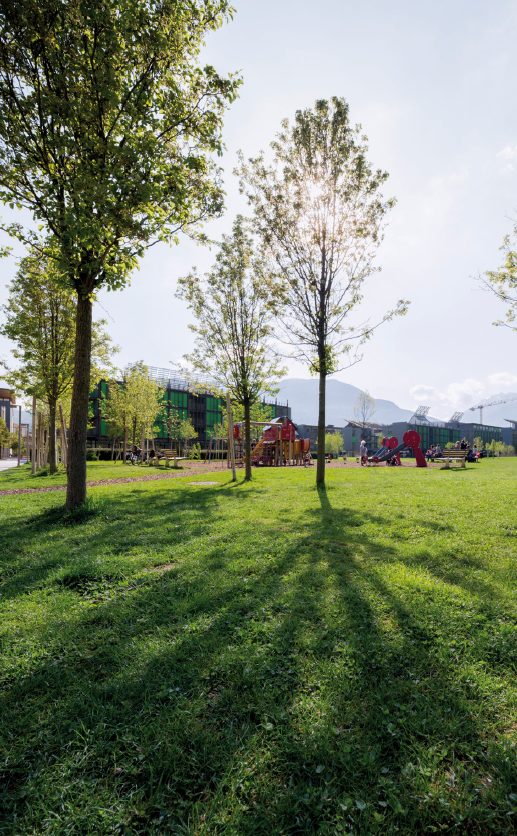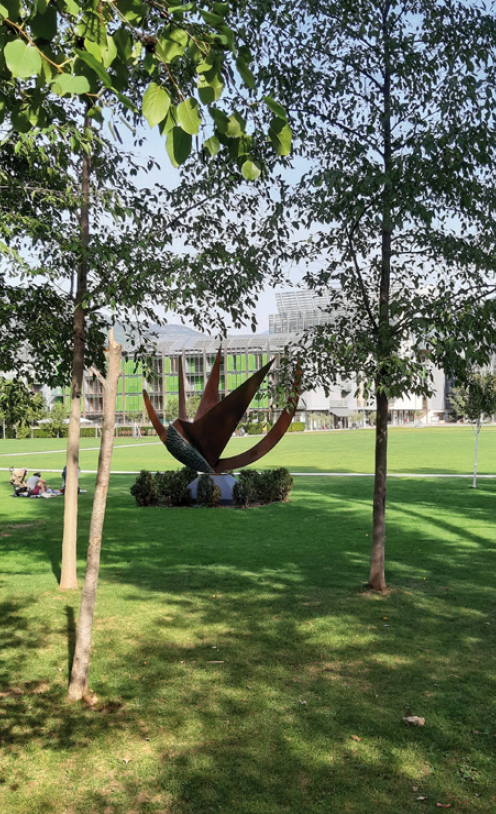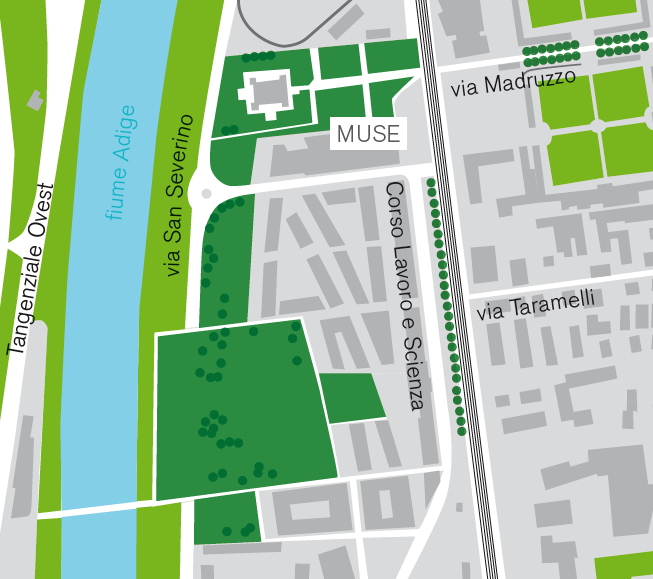The park was built at the same time as the district of the same name and the MUSE, the Science Museum, on a project by the studio of the architect Renzo Piano, in the area previously occupied by the Michelin factory.
In addition to being a central element of the district, the park is an instrument of connection between the city and the river, and a source of landscape redevelopment and reconstruction of the vegetative environment of a former industrial area.
The area takes its name from the nearby elegant Palazzo delle Albere, a bishop's villa built on the occasion of the Council of Trent in the 16th century, so named in reference to the Populus alba, white poplars, which accompanied the road connecting the palace and the city.
Inaugurated in 2013, the park occupies an area of more than 4 hectares and extends to the left bank of the Adige connecting to the interprovincial cycle path along the river. The skeleton of the project on the east-west routes consists of rows of tall trees to form a dense green mass of maples, beeches, birches, background to a vast central grassy clearing on which in spring emerge colorful islands of tulips, daffodils, muscars. In the greenery, a large children's play area and a crowded cable car welcome visitors. Part of the park features elegant water channels bordered by lake plants and willows. The water also enters the houses accompanied by flowering pear trees that follow rows of alder trees.



